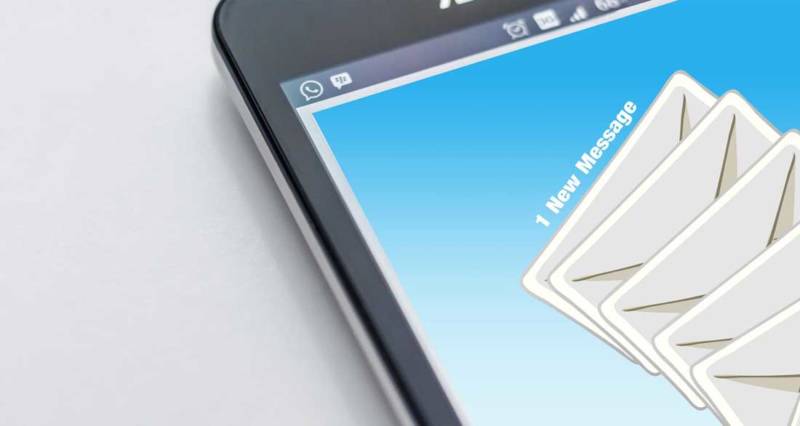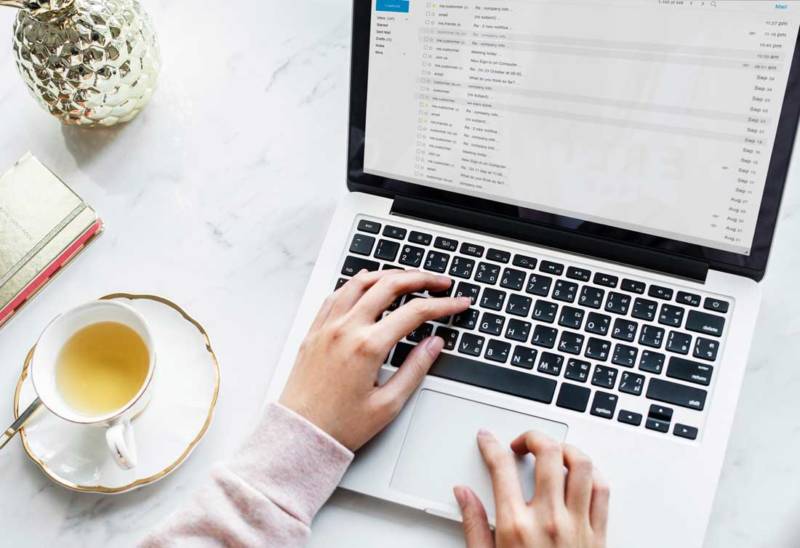Electronic mail, or email, is one of the most common methods of communicating in the workplace. It’s convenient because it allows you to read and respond to the sender when you are ready. Email is fast, your message is delivered as soon as you press send. It’s efficient because it allows you to share information with as many or as few people as you want. But, if used incorrectly or abused, email can be distracting and a waste of time. Take time to learn and follow the following basic rules for using email in the workplace:
- Use your work email for work
- Respond quickly
- Manage your inbox
- Consider other ways to share information
- Be professional

Use your work email for work
The first of our email rules is to use your work email for work. When you’re trying to decide if an email is for work, think about the topic of the email and who will receive the email. If you’re sending the email to a friend or family member outside of work, the email is probably not work-related. If the topic of the email isn’t related to your job or your employer, it probably isn’t work-related. These emails should be sent from your personal email and sent in your free time, not during work hours.

Respond quickly
One of the great benefits of email is that it is a fast way to communicate with people. However, if you don’t respond to your emails in a reasonable amount of time, this benefit will be lost. If you know how to respond to the email, it’s best to respond right away. That way you won’t accidentally forget about the email or have it taking up space in your inbox. If you need more time to think about your response or to look up some information, it’s okay to take time to do so. However, if you know you won’t be able to find the information within the next 24 hours, or one day, email the person right away. Let the person know that you received the email and that you might need some time to respond.

Manage your inbox
Think of your inbox, or the place where you can see new emails that people have sent you, as an electronic mailbox. Mail is sent to your inbox, and the mail stays there until you do something with it. It’s important to keep your inbox organized so that you can keep track of the messages you receive and send. After you have read and responded to an email you have three options. You can:
- leave the email in your inbox
- move it to the trash to get rid of it
- save the email in your “archives”
After you respond to your email, if you don’t think you will need to read the email again, you can move the email to the trash. Or, if there is important information in the email that you might need later, archive, or file, the email. Think of archiving as storing the email in a file for later. Then, when you need to find the email again, you can search for the email by the topic or even the person who sent the email.

Consider other ways to share information
Although email is a powerful way to communicate, there are some situations where email is not the best way to share information. Before you send an email, think about whether or not email is your best option, or if there is a better way to share the information. For example, if you need to give bad news, it’s best to talk to the person face-to-face. Or if what you need to say requires a long explanation, a phone call might be a better way to share the information.
Also, if you need to share information quickly, a phone call is a better way to make sure that the person receives the information right away. With email, you don’t know when people will check their email again and you usually don’t know they have received the information until they respond to you.

Be professional
Email is a more relaxed form of communication, but that doesn’t mean that it’s okay to forget about all grammar and spelling rules. When you’re using email in the workplace it’s important to use correct grammar and spelling. It’s also important to begin your emails with a greeting and end by identifying yourself.
For example, start the email by addressing the person by name. Since email is informal, starting the email with “Hi Mark” rather than, “Dear Mark” is usually okay. At the end of the email, be sure to include your name, position or job title and contact information.
Thank you for tuning into our post on email rules. If you would like to learn more about teaching workplace readiness skills, click the free trial link below.
